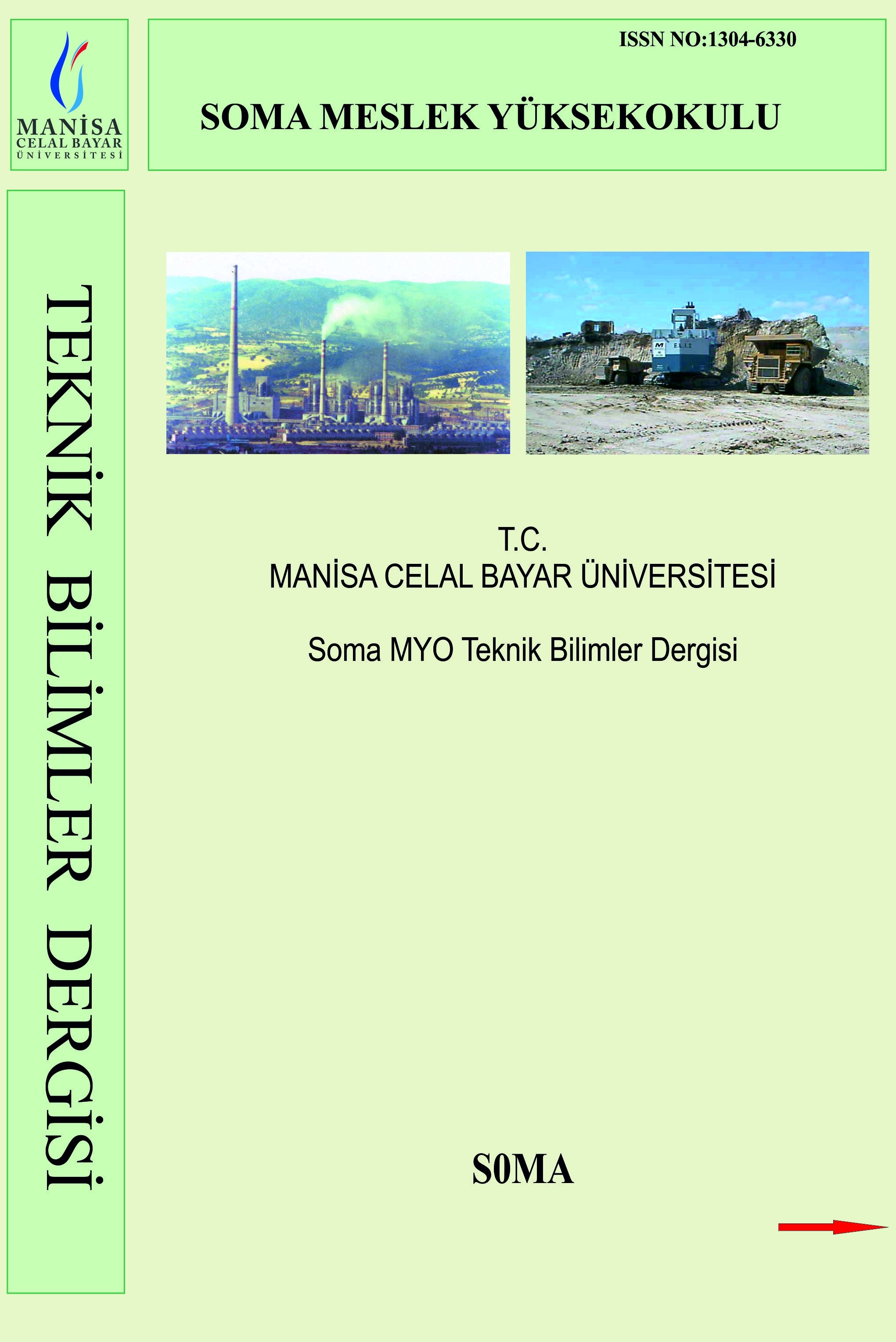KAPALI SAYILARA DAYALI OYUN PROGRAMI
Bu çalışmanın amacı, ilköğretim öğrencilerine matematik dersinde sayıları sıralama ve çıkarma konusunu daha ilgi çekici hale getirecek kapalı sayılar kavramını, bir oyun programı yardımıyla tanıtmaktır. Kapalı sayılar ve diziler; 1946 yılında Hintli bir matematikçi olan Kaprekar tarafından bulunan kaprekar sabitinin farklı basamak sayıları ve farklı tabanlar için genelleştirilmesidir. İki basamaklı sayıların temel alındığı Zihin okuyucu oyun programının, öğrencilerin sıralama ve çıkarma işlemlerini öğrenme sürecine olumlu yönde etki edeceği düşünülmektedir. Bu çalışmanın önemli bir çıktısı da 110 basamağa kadar kapalı sayıların ve 60 basamağa kadar dizilerin kapalı sayılar kütüphanesinde sunulmasıdır.
Anahtar Kelimeler:
Kaprekar sabiti, Kapalı sayılar ve diziler, Matematiksel bilgisayar oyunu
A GAME BASED ON LOCKED NUMBERS
The aim of this study is to introduce the concept of locked numbers through a game program that makes students more interested in studying ordering and subtracting at mathematics courses. Locked numbers and sequences are a generalization of the Kaprekar constant discovered in 1946 by the Indian mathematician D..R. Kaprekar for different bases and number of digits. The first observations indicated that the Mind Reader Game program promotes a more positive attitude to maths learning for ordering and subtraction process. In this study, we also presented Locked Numbers Library that is an organized collection of locked numbers up to 10110 and sequences up to 60 digits.
___
- Babayev, D.A., Nuriyev, U.G., & Sozeri, V. (4-7 July 2007). About number of Locked, integers. Mathematics Symposium, Sakarya.
- Bay, J. (2000). Bingo Games: Turning student intuitions into investigations in probability and number sense. Mathematics Teacher, 93(3).
- Birgin, O., & Gürbüz, R.(2009).İlköğretim II. Kademe Öğrencilerinin Rasyonel Sayılar Konusundaki İşlemsel ve Kavramsal Bilgi Düzeylerinin İncelenmesi, Uludağ Üniversitesi Eğitim Fakültesi Dergisi, XXII (2), 529-550.
- Çankaya, S., & Karamete, A. (2008). Eğitsel Bilgisayar Oyunlarının Öğrencilerin Matematik Dersine ve Eğitsel Bilgisayar Oyunlarına Yönelik Tutumlarına Etkisi, Mersin Üniversitesi Eğitim Fakültesi Dergisi, 4(2), 115-127
- Deutsch, D., & Goldman, B., (November 2004). Kaprekar’s Constant. Mathematics Teacher 98, 234-242.
- Frederkıng, B. (2005) , Simulations and Student Learning. Journal of Political Science Education, 1, 385-393.
- Gardner, M. (March 1975). Mathematical Games. Scientific American 232: 112 -116.
- Jordan, J. H. (1964). Self-Producing Sequences of Digits. Amer. Math. Montly 71, 61-64.
- Kaprekar, R. (1949). Another Solitare Game. Scripta Math. 15, 244-245.
- Kaprekar, R. (1955). An Interesting property of the number 6174. Scripta Math. 21, 304.
- Kaprekar, R. The New Constant 6174. Devlali Camp, Devlali. India, 42 pages, paper bound.
- Lewis, J. R., & Ellis, R. W., (2005). Investigations into Kaprekar Process. East Tennessee State University, Johnson City, ABD.
- McFarlane, A., Sparrowhawk, A., & Heald, Y. (2002). Report on the educational use of games: An exploration by TEEM of the contribution which games can make to the educational process. Cambridge, UK: TEEM.
- McIntosh, A. (1992). A proposed framework for examining basic number sense, For the Learning of Mathematics, 12(3),2-8.
- Ota, K. R., & DuPaul, G. J. (2002). Task engagement and mathematics performance in children with attention-deficit hyperactivity disorder: Effects of supplemental computer instruction. School Psychology Quarterly, 17 (3), 242–257.
- Polat, E., & Varol, A., (2012, Şubat). Eğitsel bilgisayar oyunlarının akademik başarıya etkisi: Sosyal bilgiler dersi örneği. Akademik Bilişim Konferansı’nda sunulan bildiri, Uşak Üniversitesi.
- Prensky, M. (2001a). Digital Game-Based Learning. New York: McGraw-Hill.
- Randel, J. M., Morris, B. A., Wetzel, C.,D., & Whitehil, B., V., (1992). The Effectiveness of Games for Educational Purposes: A Review of Recent Research. Simulation& Gaming, vol 23, Issue 3.
- Smith, E., & Boyer, M., (November 2004). Design in-class simulations. PS: Political Science & Politics 29: 690-694
- Sözeri, V., (2012), Kapalı Sayılar ve Diziler Üzerine, Yayınlanmamış Doktora Tezi, Ege Üniversitesi, Fen Bilimleri Enstitüsü, İzmir.
- Trigg, W. (1971). Kaprekar’s Routine with Two-digit integers. Fibonacci Quarterly 9.2, 189-193.
- Trigg, W. (October 1970). Predictive Indices for Kaprekar’s Routine. Journal of Recreational Mathematics 3, 245-254.
- Vogel, J. F., Vogel, D. S., Cannon-Bowers, J., Bowers, C. A., Muse, K., & Wright, M. (2006). Computer gaming and interactive simulations for learning: A meta-analysis. Journal of Educational Computing Research, 34 (3), 229–243.
- Yıldız S., & Turanlı N., (2010). Öğrenci Seçme Sınavına Hazırlanan Öğrencilerin Matematik Dersine Yönelik Tutumlarının Belirlenmesi, Selçuk Üniversitesi, Ahmet Keleşoğlu Eğitim Fakültesi Dergisi, Sayı:30, 361-377.
- Yiğit A., (2007). İlköğretim 2. Sınıf Seviyesinde Bilgisayar Destekli Eğitici Matematik Oyunlarının Başarıya ve Kalıcılığa Etkisi, Yayınlanmamış Yüksek Lisans Tezi, Çukurova Üniversitesi, Sosyal Bilimler Enstitüsü, Adana
- Young, A. L. (1993). A Variation on the Two-Digit Kaprekar Routine. Fibonacci Quarterly 31, 138-145.
- ISSN: 1304-6330
- Başlangıç: 2004
- Yayıncı: Celal Bayar Üniversitesi
Sayıdaki Diğer Makaleler
BAZİK LİÇ İLE BOKSİT ATIĞINDAN ALÜMİNYUM HİDROKSİT EKTRAKSİYONU
CIVATA VE SOMUNLARIN ÇEŞİTLERİ VE ÜRETİMİ
KAPALI SAYILARA DAYALI OYUN PROGRAMI
MİNERALOJİ, MADENCİLİK VE MADEN İŞLEME ALANINDAKİ TÜRKİYE ADRESLİ YAYINLARIN ANALİZİ
DİFERANSİYEL GELİŞİM ALGORİTMASI İLE PROBLEM ÇÖZME ÜZERİNE BİR DEĞERLENDİRME
